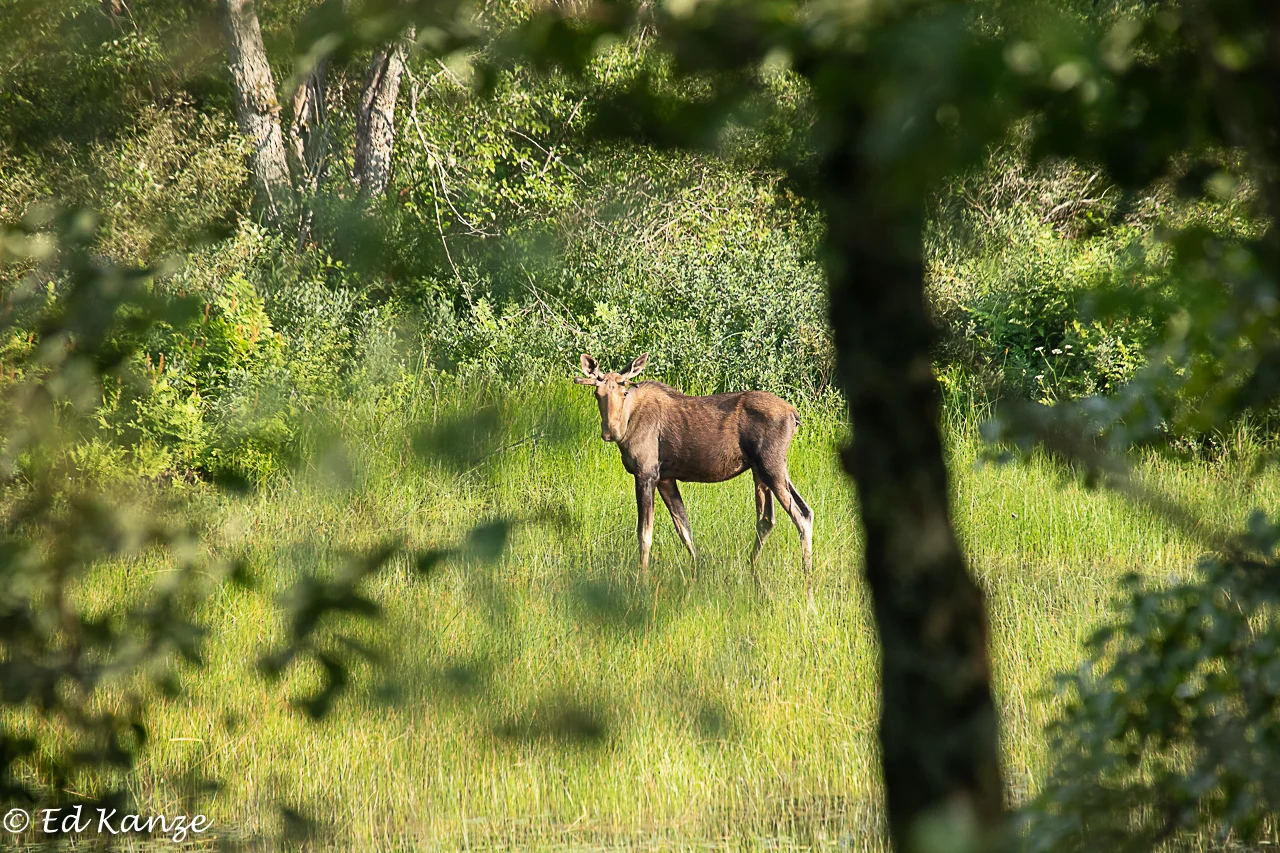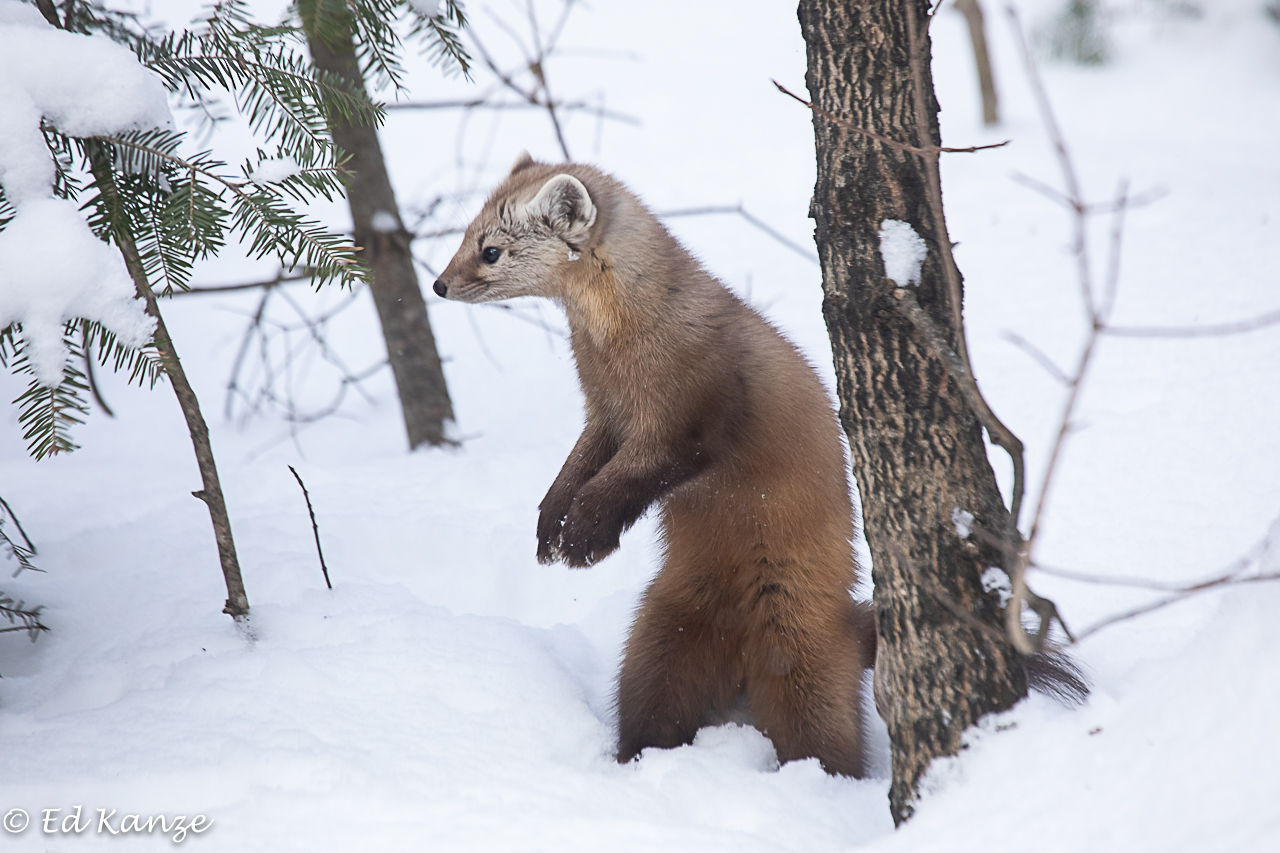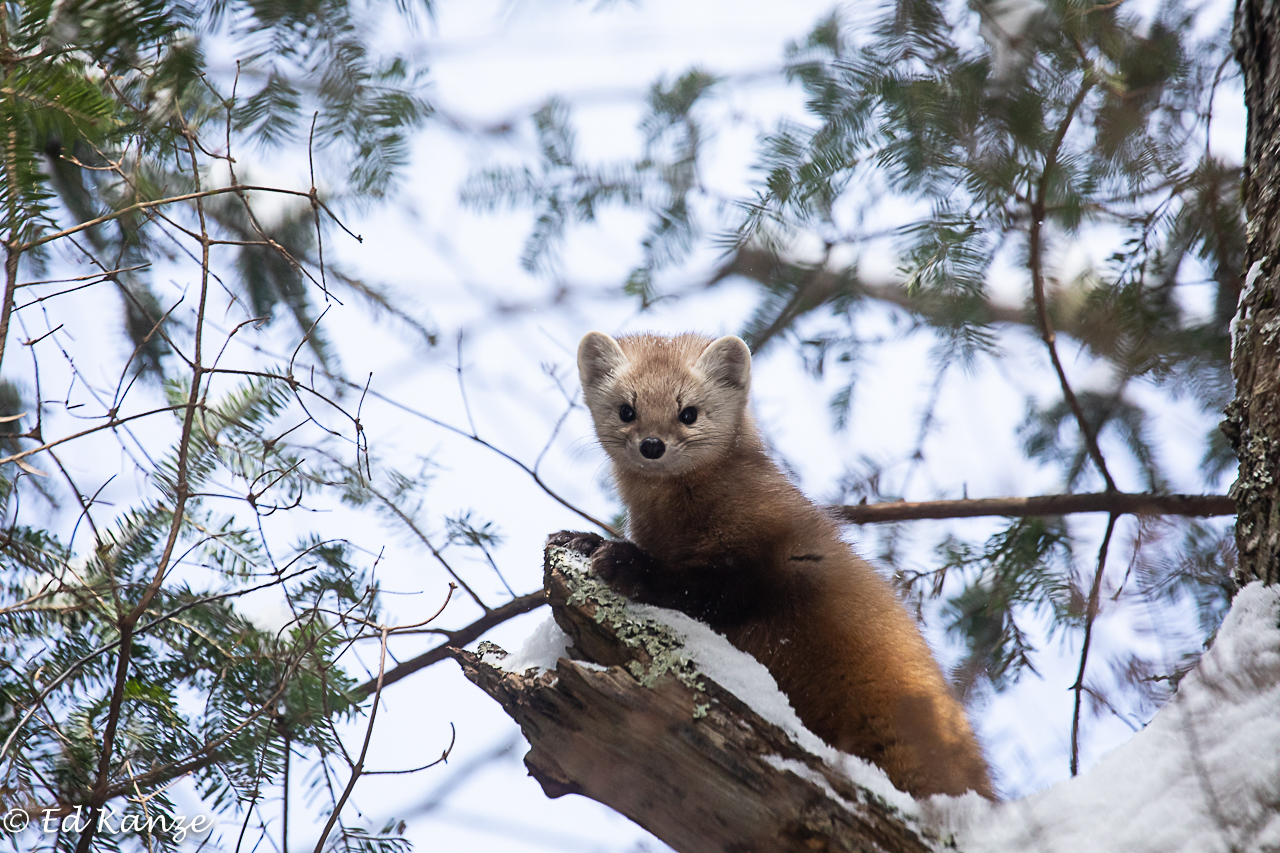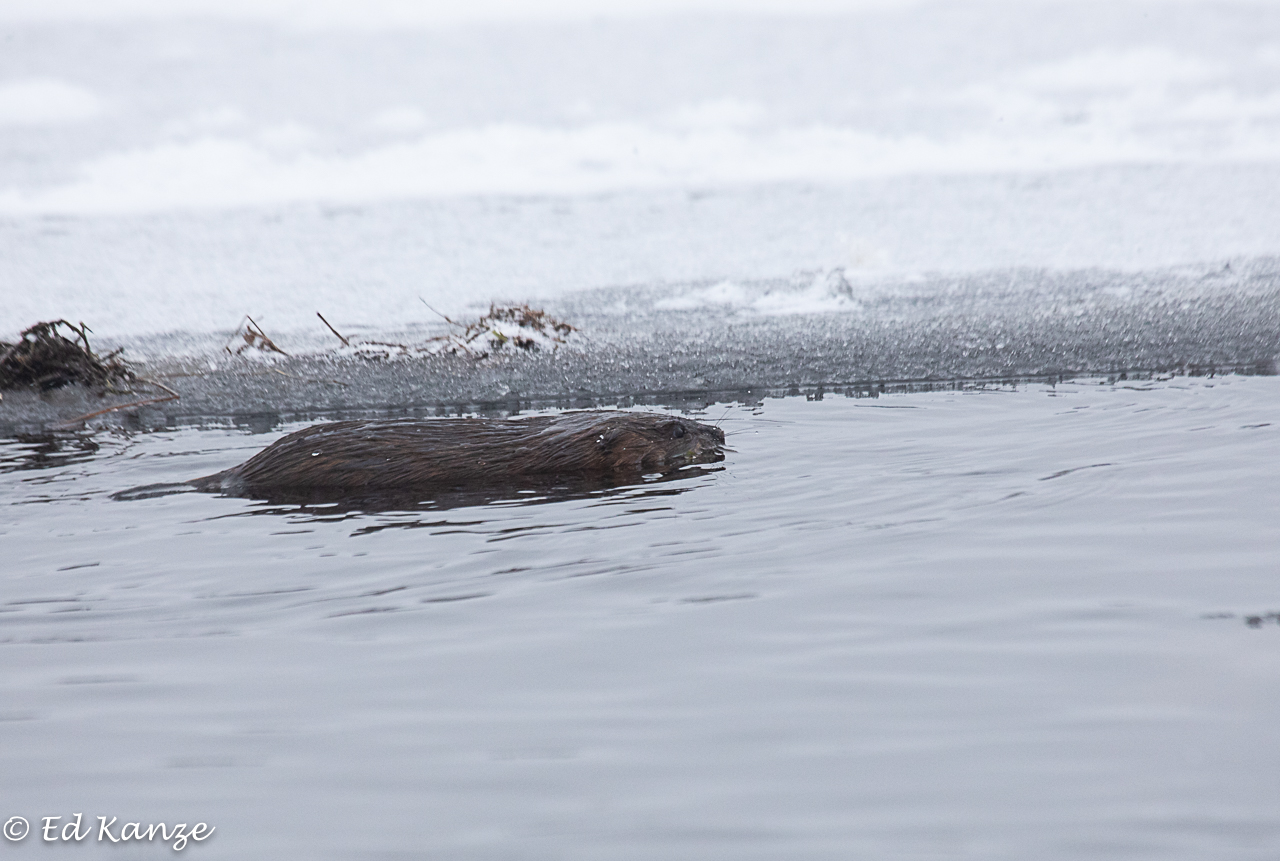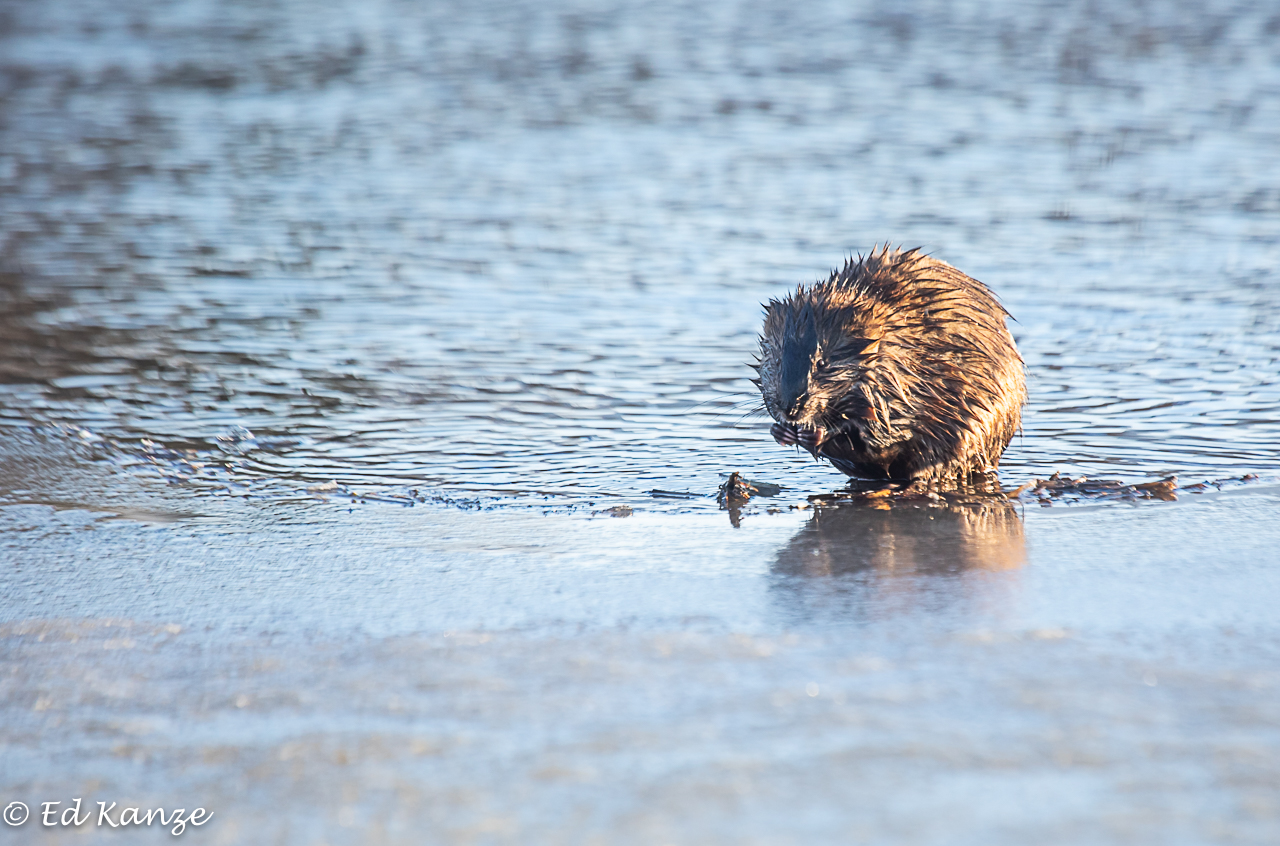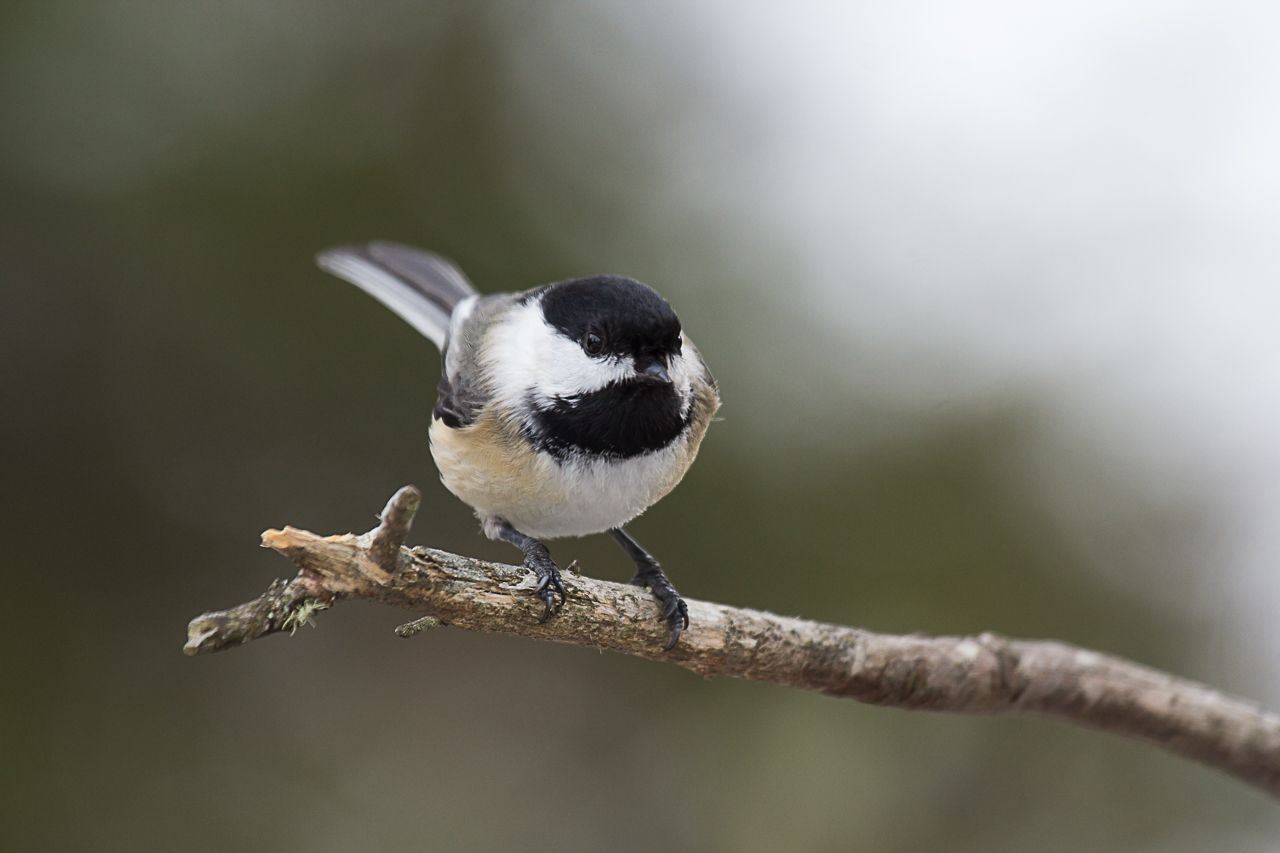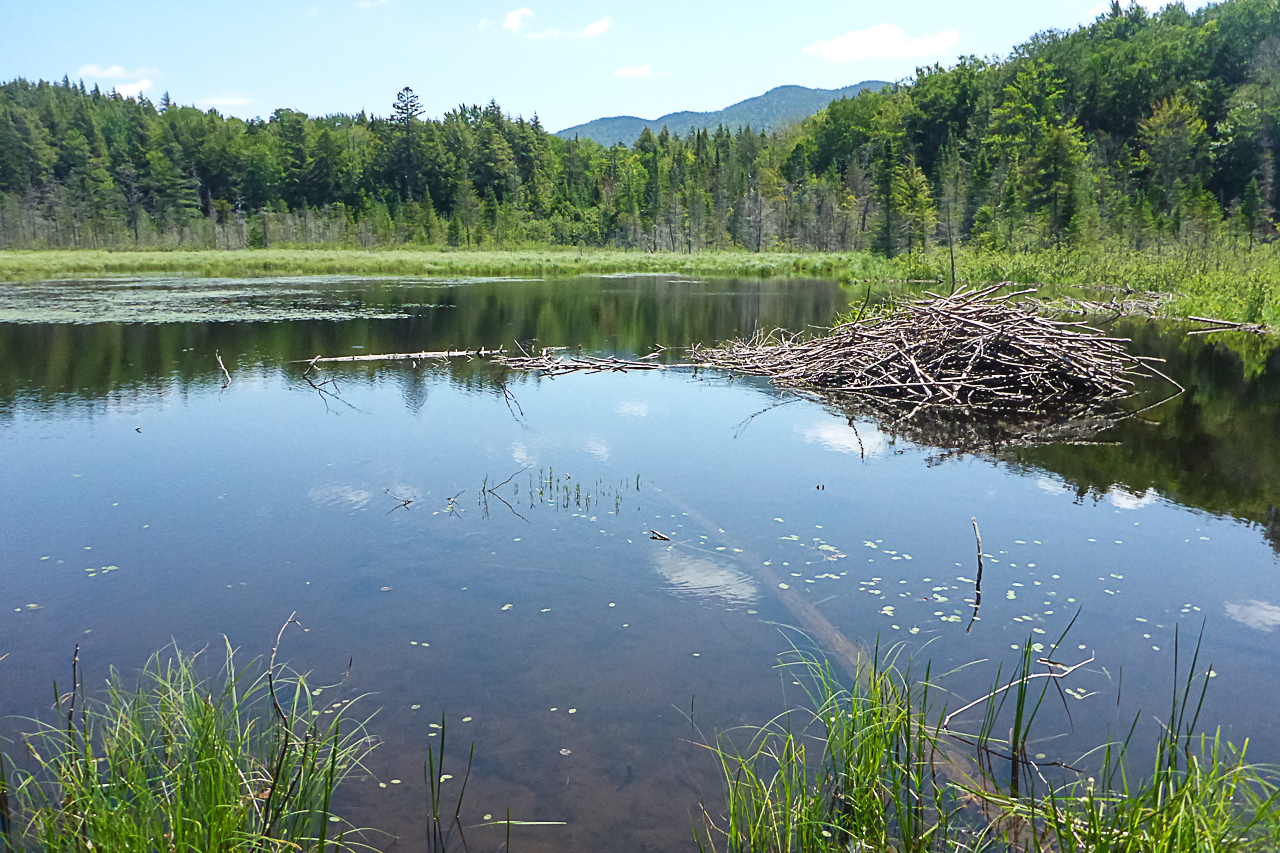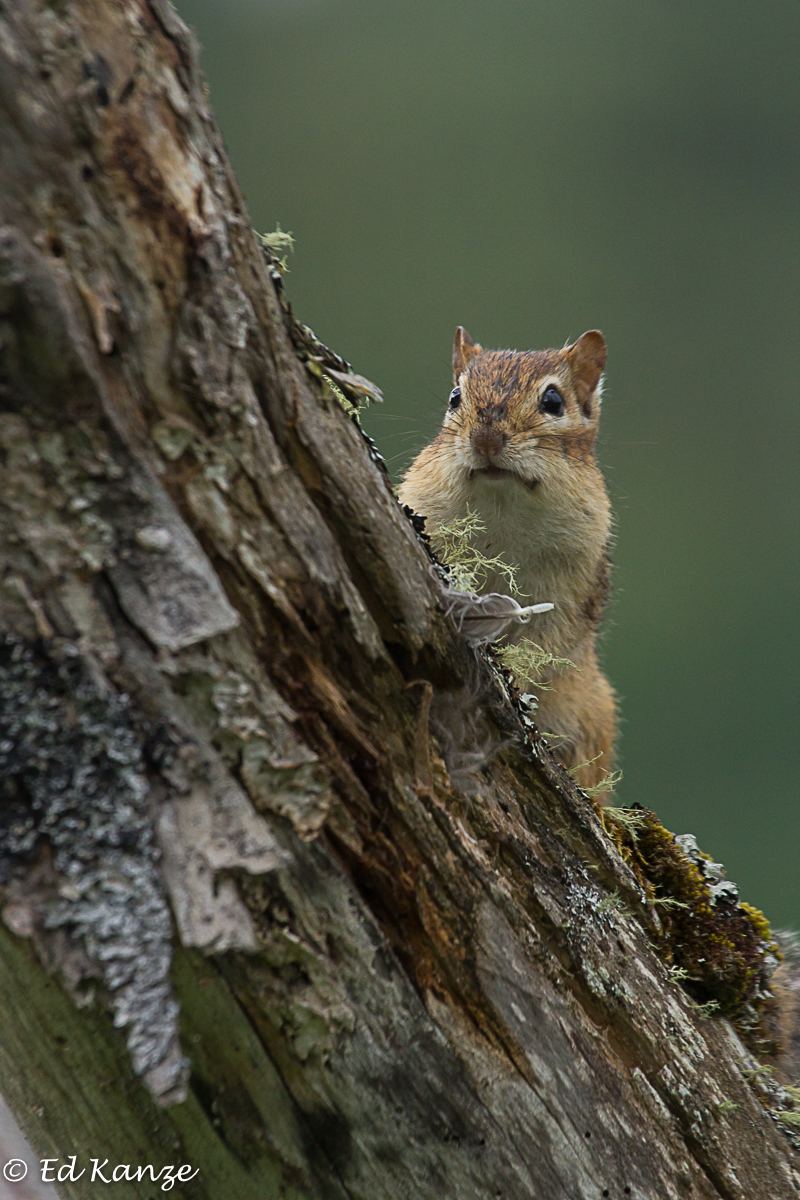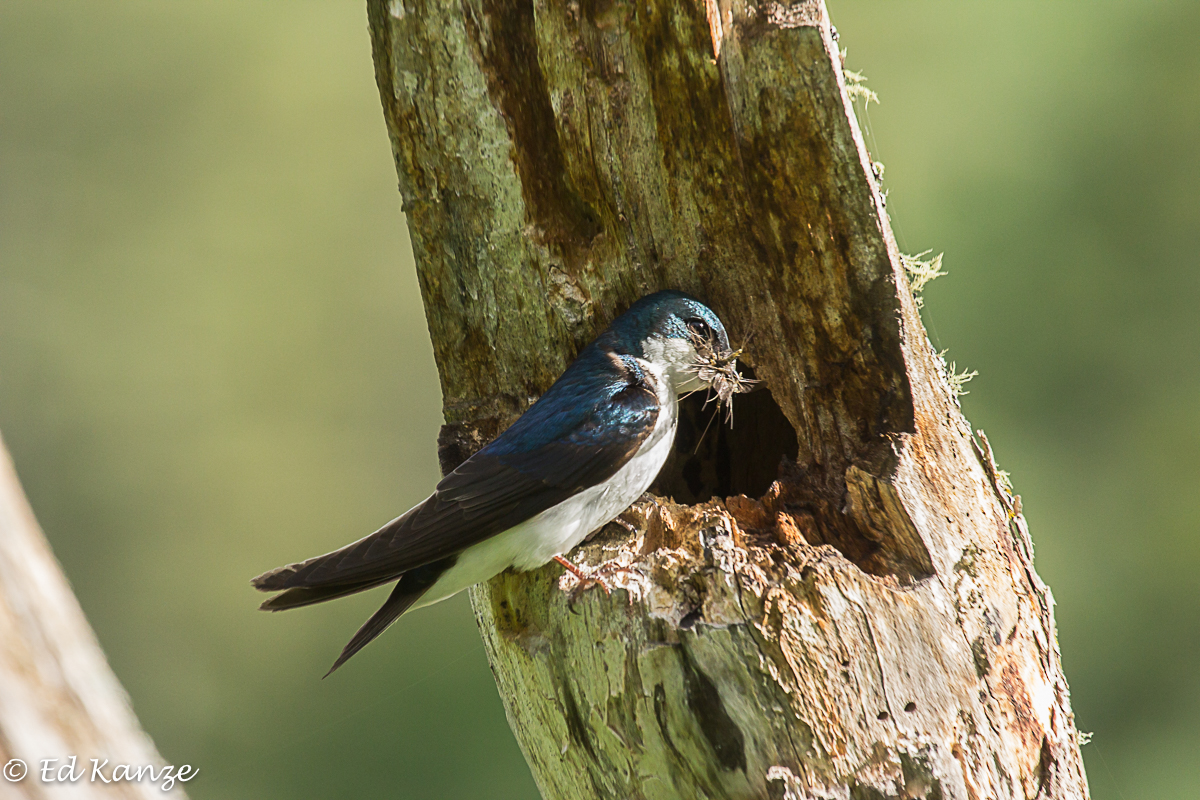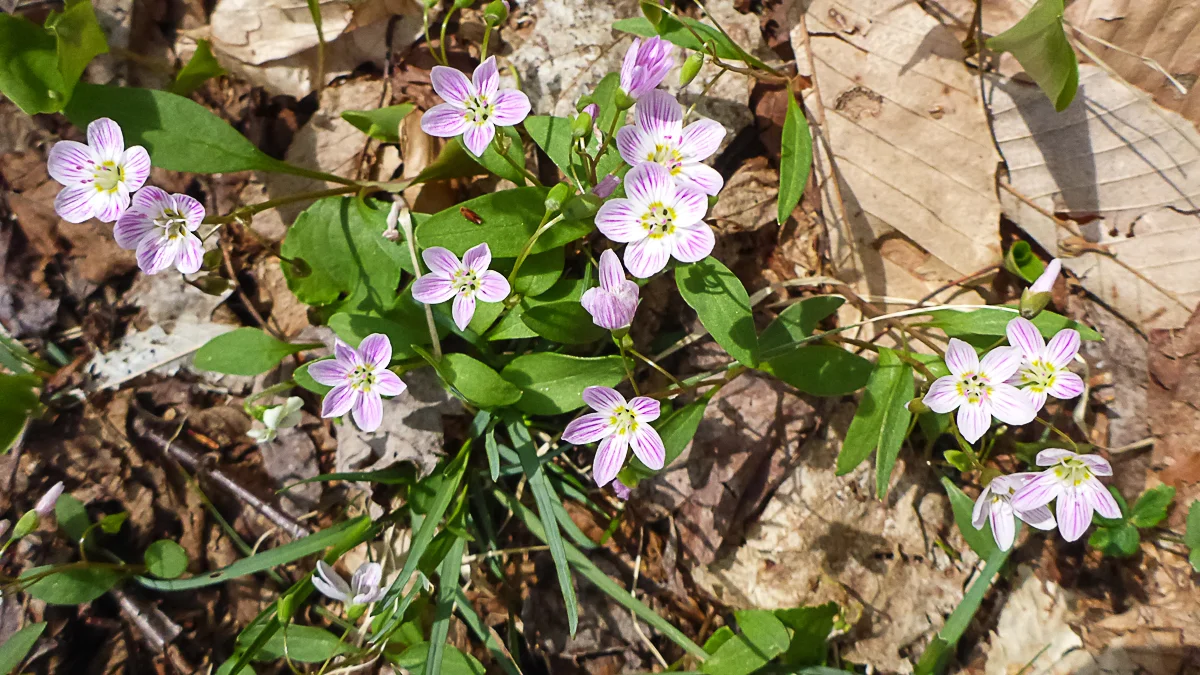One July evening, in this 50th anniversary summer of the Apollo 11 moon walk, I found myself more interested in a moose walking through a wetland near our house than I was in rehashing 1969 glory. Mind you, in epochal 1969, the year Richard Nixon was inaugurated 37th president and the Beatles played on a London rooftop and 11,616 American soldiers (plus tens of thousands of others) died in Vietnam and tennis great Rod Laver won the Grand Slam for the 2nd time, no one was more keenly interested in moon walking than I was. I was twelve that summer and on a cross-country trip to San Diego and back with my family. But times change. And I’ve changed. Today, I find a real live moose far more captivating than the cold, dry dusty surface of our lone natural satellite.
There had been reports of a moose glimpsed, and sometimes seen in plain view, along a state highway a few miles from our house. So I went to investigate. The animal was there, all right, but it was hard to spot. It looked like somebody’s lost horse peeking out of the bushes.
It’s amazing how a creature as big as a moose can be hard to see. But a moose is dark, and dark things blend into shadows. When a big, dark thing stands still, it can be very nearly invisible.
A horse is a horse, of course, and it tends to behave like a horse. But what does a moose do? Much of the time it eats, perhaps forty pounds or more of plant matter each day. Between bouts of snatching up fresh food, it ruminates. I watched the moose, a young bull, walk up to a patch of cinnamon fern. Whitetail deer don’t seem much interested in this tall, handsome non-flowering plant. Would the moose feel differently? I waited for an answer.
The fern seemed to please the moose. It helped itself to several mouthfuls. Alas, soon it was time to go home. Supper—-my own—-called. “Goodbye, moose,” I called out. With a handsome blank stare, the moose watched me go. It had made my day.





